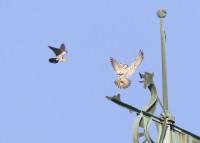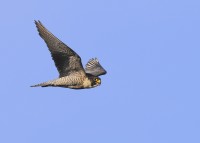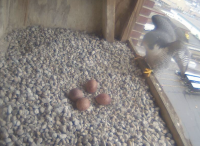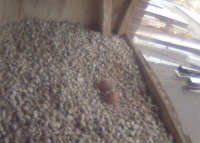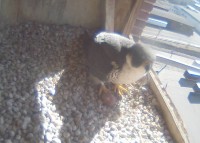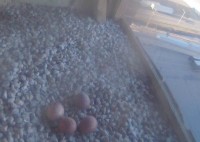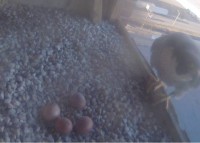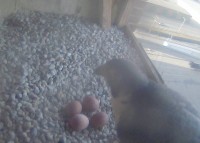Lawrence Peregrines: week of March 6, 2023
March 12, 2023 in lawrence peregrines
March 6, 2023 under clear skies, wind NW 15MPH with gusts to 23MPH, and temp at 41F. After viewing the female moving around inside the nest box around 7:30AM from the webcam, had a nice opportunity to view her again on the lateral perch pole outside the box just before 10AM. She continues to spend time in and around the nest box in advance of final pair bonding activities, and preparing to lay eggs around the end of this month. This view from Merrimack Street below the nest box.
March 7, 2023 under mostly cloudy skies, wind NW 13MPH with gusts to 22MPH, and temp at 33F with wind chill at 24F. Arrived at the Clock Tower with no sign of either falcon, then moved on to the Verizon Clock Tower. Not surprising with continued chilly temps to find the male perched on one of the south facing heat exhaust ledges. This is a favorite perch location in the winter months. No female in sight. The male scratched and preened for a while with this photo showing the male using his right leg for head scratching. Note the federal silver leg band on the right foot. Hoping to capture an image showing the black/green 78AB state leg band….stay tuned.
March 8, 2023 under overcast skies, wind N at 12MPH and gusts to 24MPH, and temp at 37F. Just before 10AM, the female was observed perched on the outer edge of the nest box and looking off to the west. She walked in and out of the nest box a number of times and was seen pushing the gravel around to prepare the scrape for laying eggs. Prior research indicates that although the male will lead the female to scrape locations and initiate scraping action, they will both make further adjustment to the scraping bowl. The image below shows a classic move by the female where she lies on her breast and pushes her feet backward to deepen the scrape bowl.
March 9, 2023 under clear skies, wind NW 10MPH, and temp at 40F. From the New Balance webcam, we can see her perched on the lateral pole extending out from the nest box while she preens herself and continues to establish this location as most likely for laying eggs this year!
March 10, 2023 just before 6AM, under clear skies, calm wind conditions, and temp at 28F. From the New Balance webcam the female was seen moving around inside the nest box and making squawking calls.
March 11, 2023, near 10:30AM, under overcast skies, wind N at 16MPH, and temp at 36F. From the New Balance webcam we see the female moving out further on the lateral perch pole while continuing to maintain an active presence in this location.
March 12, 2023, just after 1:00PM, under clear skies, wind E at 9MPH, and temp at 43F. From the New Balance webcam we see the female soaking in the afternoon sun and preening as the sun moves to the west side of the New Balance building.
Overall, it has been nice to have sightings of both female and male in the extended area. The female seems to claiming this location for this year’s breeding cycle, and we’ll likely know for sure within two, possible three weeks! Stay tuned!

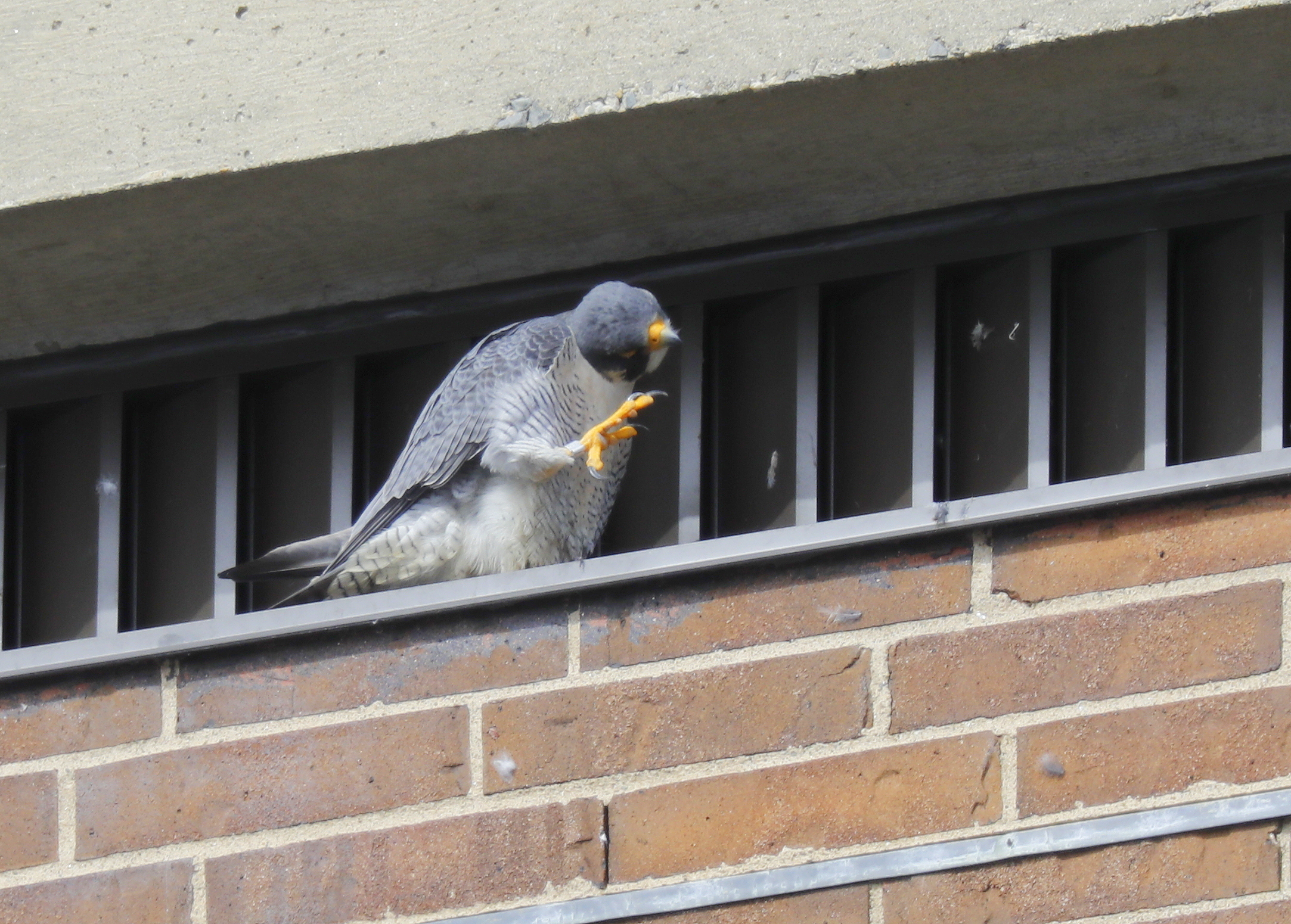
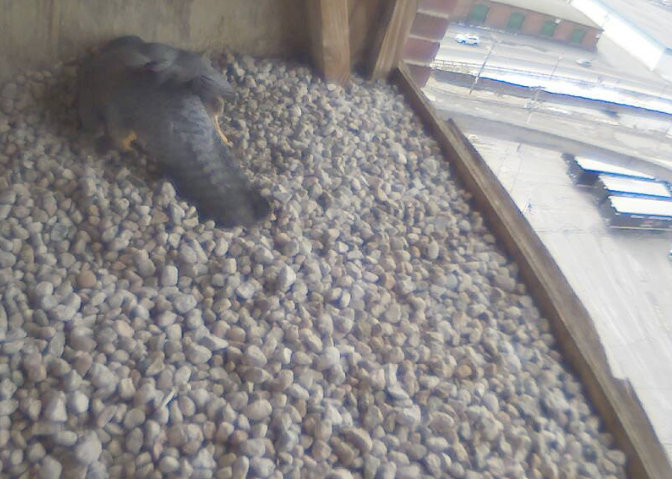

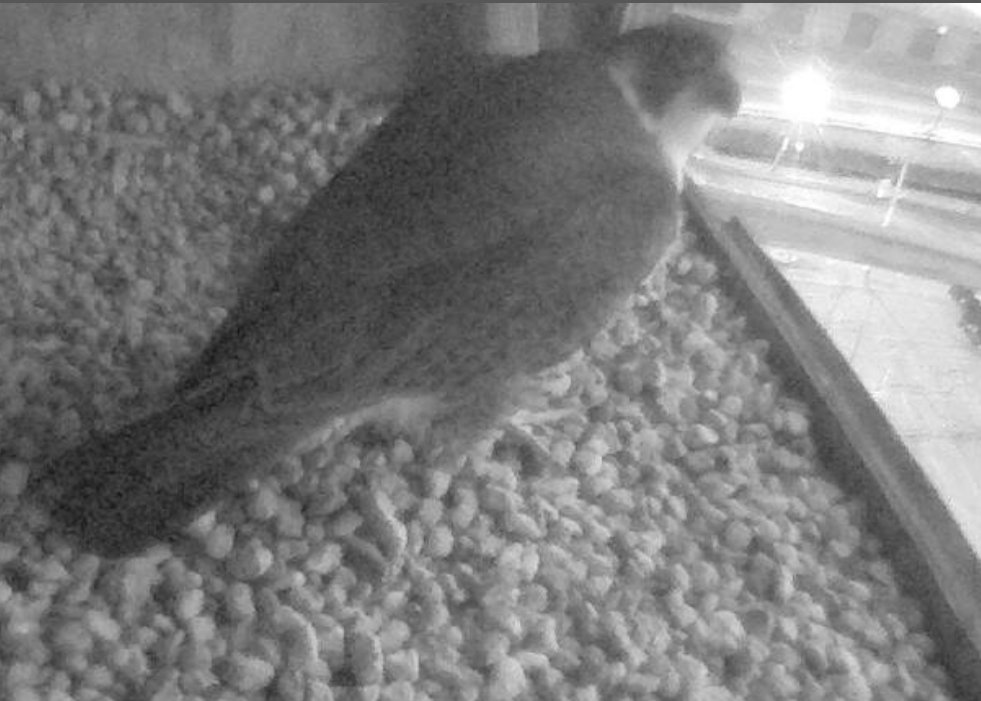
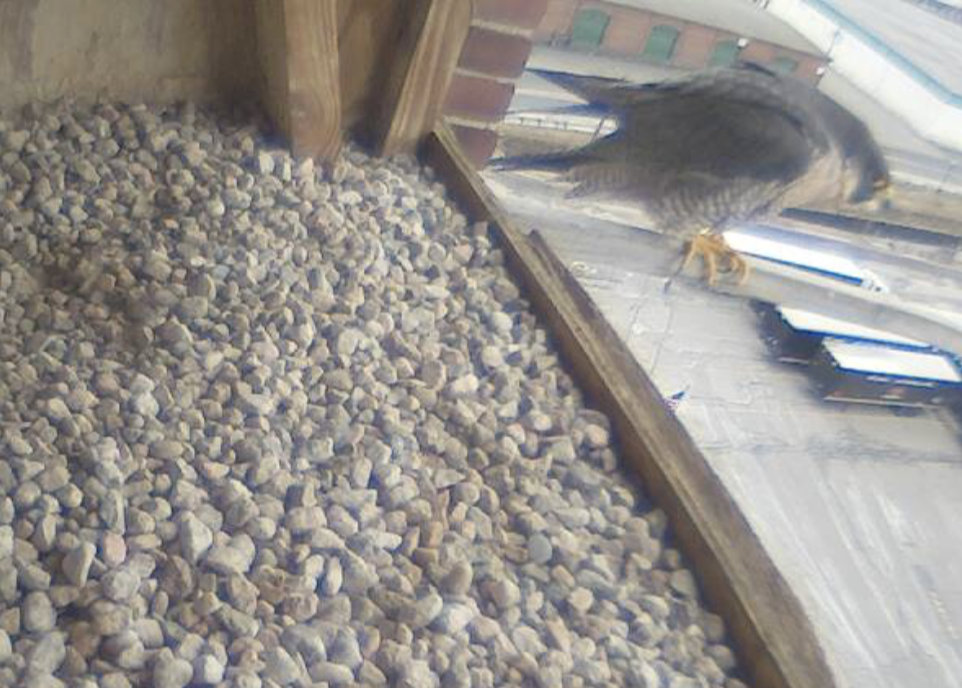

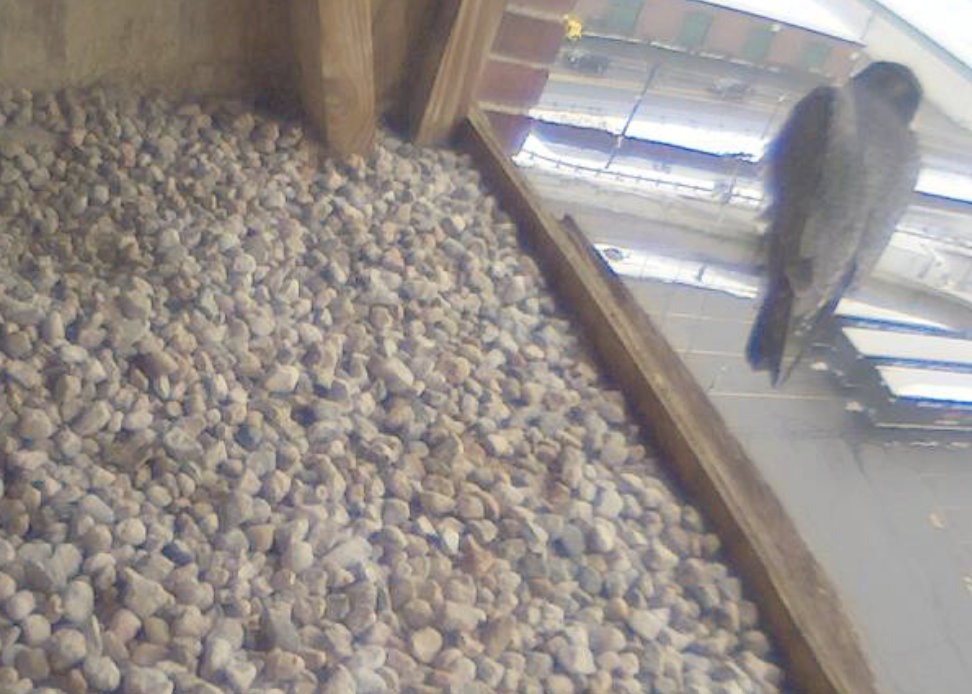
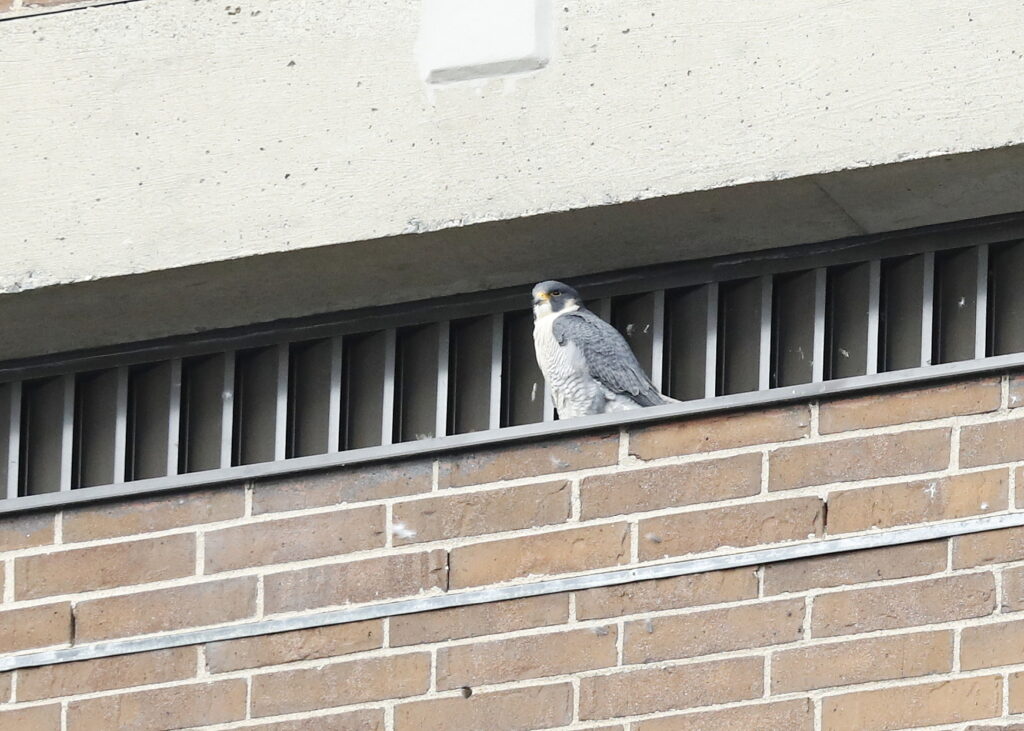
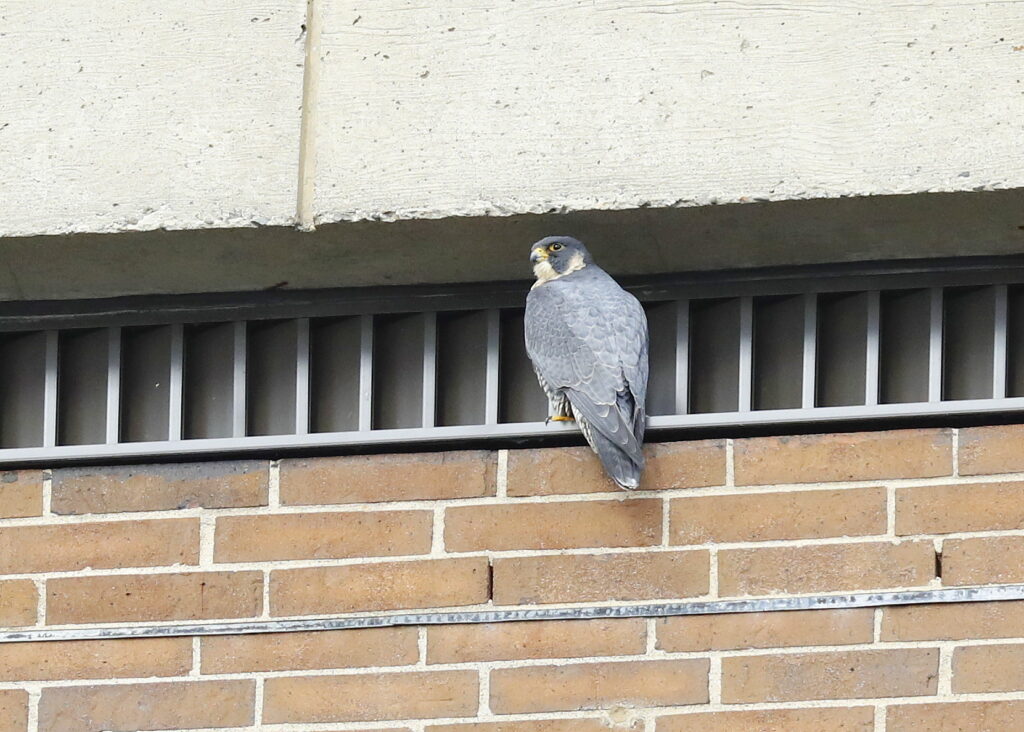
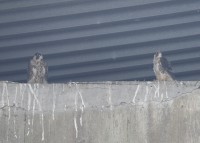
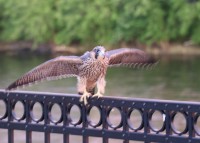
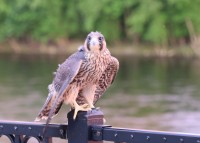

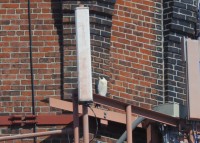 Many mornings, the male was perched in the upper zone of the smokestack, facing south or southeast, and soaking in the morning sun. The departure flight patterns, altitudes, and directions were quite a mix and never really provided firm clues. This image was captured on March 23, 2022, and likely before the female had selected the exact nest ledge location for laying eggs.
Many mornings, the male was perched in the upper zone of the smokestack, facing south or southeast, and soaking in the morning sun. The departure flight patterns, altitudes, and directions were quite a mix and never really provided firm clues. This image was captured on March 23, 2022, and likely before the female had selected the exact nest ledge location for laying eggs.